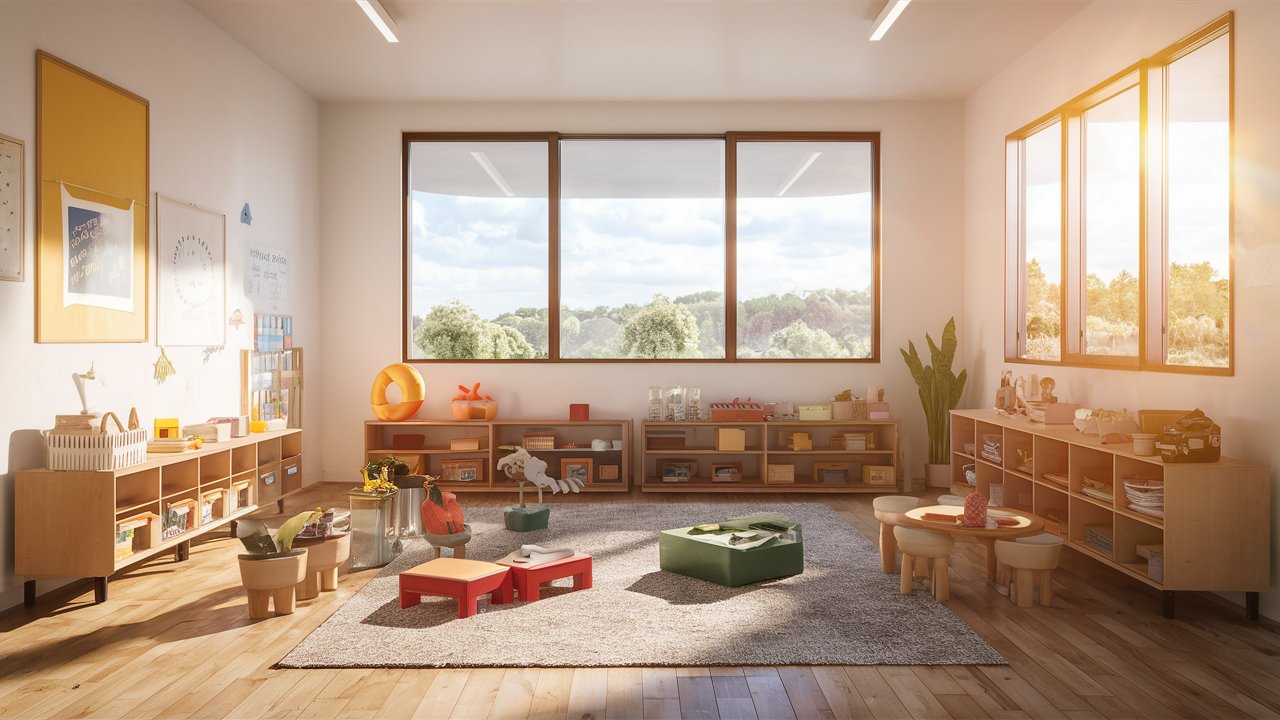Disclosure: Some links on this site are affiliate links. As Amazon Associates, we earn from qualifying purchases (at no cost to you).
The Montessori method emphasizes creating an environment that fosters independence, creativity, and learning through exploration.
The design and decor of Montessori schools and classrooms play a crucial role in achieving these goals. Here are 20 Montessori decor ideas to help you create a nurturing and inspiring learning space for children.
20 Montessori Classroom Ideas
1. Natural Light
Maximize natural light in the classroom by incorporating large windows and skylights. Natural light not only illuminates the space beautifully but also has numerous benefits for children’s well-being, including boosting mood and enhancing concentration.

Use light, airy window treatments to allow as much sunlight in as possible while also maintaining privacy.
2. Neutral Color Palette
Use a neutral color palette to create a calm and peaceful atmosphere. Soft tones like beige, cream, and light gray provide a soothing backdrop that allows children to concentrate better without being overstimulated.

These colors help create a balanced environment where children can focus on their activities and learning materials.
3. Child-Sized Furniture
Incorporate child-sized furniture to make the environment more accessible and comfortable for children. Tables, chairs, and shelves should be at a height that children can easily reach, fostering independence and self-reliance.

This encourages them to take responsibility for their learning by accessing materials on their own and putting them away after use.
4. Natural Materials
Opt for natural materials such as wood, cotton, and wool. These materials are not only durable but also create a warm and inviting atmosphere.
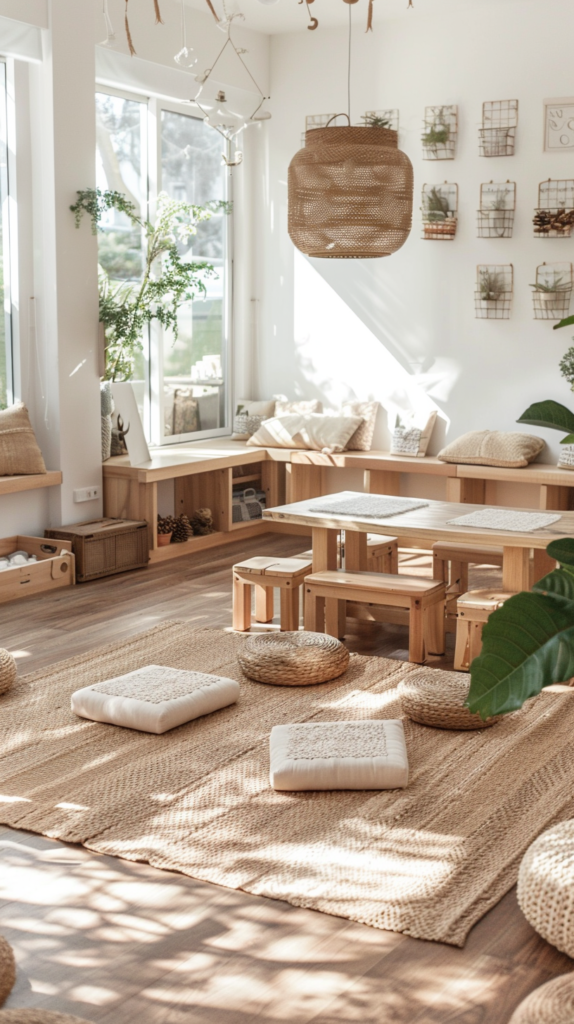
Avoid plastic and synthetic materials as much as possible to maintain an organic feel that resonates with the Montessori philosophy of connecting with nature.
5. Open Shelving
Use open shelving to make materials and supplies easily accessible. Open shelves encourage children to choose their activities independently and help them learn to organize and put things away.
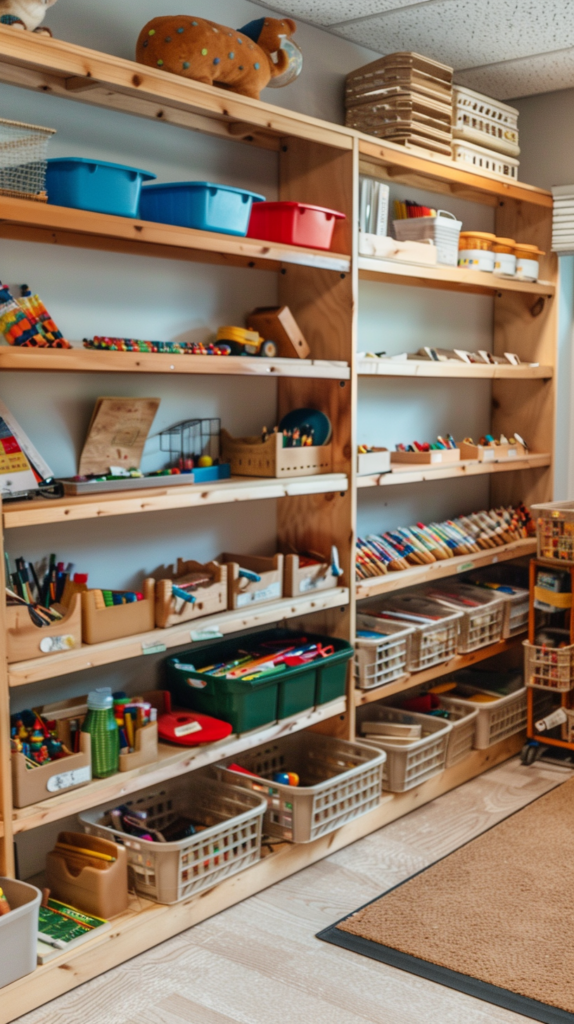
This setup promotes autonomy and responsibility, as children can see all available resources and select what they need without adult assistance.
6. Nature-Inspired Decor
Incorporate nature-inspired decor such as plants, nature posters, and natural textures. Bringing elements of nature into the classroom can help children feel more connected to the natural world and foster a sense of calm and curiosity.

Consider adding a small indoor garden or a terrarium to enhance this connection.
7. Minimalist Design
Adopt a minimalist design approach to avoid clutter and overstimulation. Keep decorations simple and functional, ensuring that every item in the classroom serves a purpose in the learning process.

This helps create a serene and focused environment where children can concentrate on their work without distractions.
8. Activity Zones
Create distinct activity zones within the classroom to organize different types of learning activities. Designate areas for reading, art, science, and practical life activities.
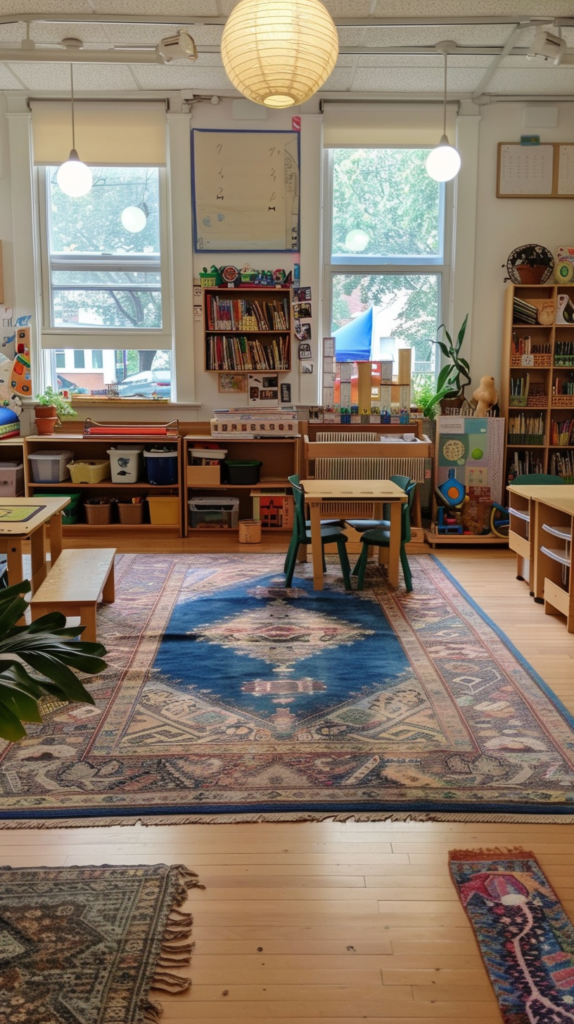
This organization helps children know where to go for specific tasks and fosters a sense of order and independence. Clearly defined zones also make it easier for children to transition between activities.
9. Comfortable Reading Nook
Set up a comfortable reading nook with soft seating, cushions, and a variety of books. This space should be inviting and cozy, encouraging children to develop a love for reading. Include a mix of fiction and non-fiction books to cater to different interests and reading levels.

A well-designed reading nook can become a favorite spot for quiet time and exploration through books.
10. Interactive Wall Art
Incorporate interactive wall art that engages children and stimulates their curiosity. This can include world maps, alphabet charts, or tactile art pieces that children can touch and explore.

Interactive decor not only beautifies the space but also serves as an educational tool, making learning more dynamic and hands-on.
11. Cozy Carpets and Rugs
Add cozy carpets and rugs to define different areas and provide comfortable places for children to sit and work.

Soft floor coverings create a warm, homey atmosphere and can be used to designate specific activity zones. Choose natural fibers and neutral colors to maintain the overall aesthetic of the classroom.
12. Accessible Art Supplies
Ensure that art supplies are accessible to children by storing them in low, open shelves or baskets. This encourages creativity and self-expression as children can independently access materials whenever they feel inspired.

Stock a variety of supplies like crayons, markers, paper, and clay to cater to different artistic interests.
13. Practical Life Area
Set up a practical life area with child-sized tools and materials for everyday tasks like washing dishes, sweeping, and preparing snacks.

This area helps children develop fine motor skills and learn about daily responsibilities. Include items like small brooms, pitchers, and child-friendly utensils.
14. Music Corner
Create a music corner with a selection of instruments and musical toys. This area encourages children to explore sound, rhythm, and music, fostering their auditory skills and creativity.

Instruments like tambourines, xylophones, and hand drums are perfect for little hands.
15. Sensory Play Area
Incorporate a sensory play area with materials that engage different senses. This can include tactile items like sand, water tables, textured fabrics, and sensory bins filled with various objects.

Sensory play helps children explore and understand the world through their senses, promoting cognitive and motor development.
16. Child-Friendly Art Display
Create a child-friendly art display area where children can showcase their artwork. Use low-hanging boards or strings with clips to make it easy for children to display their creations.

This not only boosts their self-esteem but also encourages a sense of pride and accomplishment in their work.
17. Comfortable Seating Options
Provide a variety of comfortable seating options such as bean bags, floor cushions, and small chairs. This allows children to choose where they feel most comfortable working and can help them concentrate better.

Flexible seating arrangements cater to different learning styles and preferences.
18. Learning Through Play
Incorporate learning through play by including educational toys and games that promote problem-solving and critical thinking. Items like building blocks, puzzles, and Montessori-specific materials can be both fun and educational.
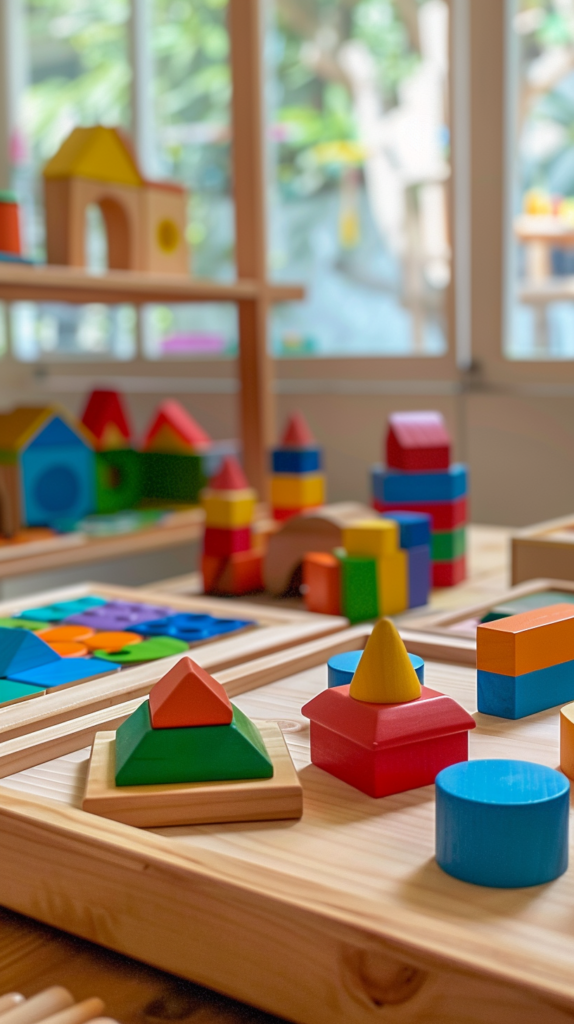
Ensure these items are easily accessible and organized!
19. Calm Down Corner
Designate a calm down corner with soft pillows, calming decor, and sensory toys. This space provides a safe and quiet area for children to retreat to when they need to manage their emotions or take a break from classroom activities.

Why is it cool? Well, it helps children learn self-regulation and coping skills.
20. Outdoor Learning Space
If possible, create an outdoor learning space where children can engage with nature and enjoy fresh air. Include elements like a garden, sandpit, or outdoor art area.

Outdoor learning environments support physical activity, exploration, and a connection to the natural world.
Conclusion
Creating a Montessori-inspired classroom involves thoughtful design and decor choices that support independent learning, creativity, and a sense of calm.
By incorporating these 20 ideas, you can create a nurturing and inspiring environment where children can thrive!
Remember, the key to a successful Montessori classroom is to make it child-centered, with accessible materials and a serene atmosphere that encourages exploration and learning.

